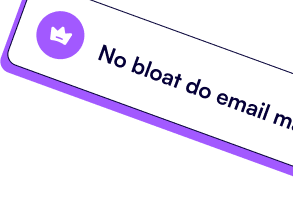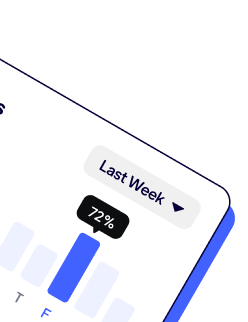This banner can be used to inform vistors of something important.
Learn more

On average, companies allocate around 13.6% of their total budgets to marketing, but how many of these efforts translate into tangible results? A marketing debrief answers this question: a post-campaign analysis that helps you understand what worked, what didn’t, and why. Comparing a campaign’s outcomes against its objectives, this systematic review gathers data-backed insights to guide future strategies.
Besides, a marketing debrief is a purpose-driven meeting that reveals the insights, learning points, and actionable takeaways from your campaigns. This ensures that your next campaign is not just a shot in the dark but a well-informed, strategic move. Read on for a one-stop guide to marketing debriefing, including its importance, benefits, and the best practices to conduct one.
With global advertising spending expected to reach $667 billion by 2024, it’s essential to ensure that you’re reaping the fruits of your investments. A marketing debrief helps you do just that and more. Defined as a structured, detailed report drafted after a marketing campaign or project has been completed, a marketing debrief helps you analyze a campaign’s performance.
Simply put, a marketing debrief is like a group discussion after a big game, where everyone shares their opinions on what worked, what didn’t, and how to play better next time. Thus, this report helps businesses connect better with their audience and achieve their marketing goals by dissecting past campaigns.
A well-prepared marketing debrief should be clear, concise, and focused on tangible insights. Plus, it should involve input from everyone involved in the campaign, from marketers and designers to sales teams and even customers.
A marketing reporting is a staple in any post-campaign analysis, giving teams the opportunity to reflect on the outcomes of their PPC advertising efforts. To achieve its goals, an effective debrief should answer the following questions:
When a marketing campaign is executed, it’s essential to assess how well it achieved its intended objectives. This can be done through a marketing debrief, where the team compares the goals they set out in advance to what actually happened. Through this comparison, you not only learn about whether the campaign was a hit or a miss but also understand the insights behind specific metrics.
These may include return on investment (ROI), click-through rate (CTR), customer acquisition cost (CAC), and conversion rate, to name a few. By analyzing these marketing metrics, businesses can quantify the effectiveness of their campaigns, which helps them make more data-driven decisions in the future.

A marketing debrief provides a structured opportunity to understand the strengths and weaknesses of your campaigns. This is based on a detailed, thorough analysis of elements such as messaging, channel selection, audience targeting, and creative execution. For example, if an e-commerce or social media campaign got better engagement (leads, queries, and comments) than email marketing, the team needs to understand why.
Was it because your target audience is more active on social media, or was the messaging more persuasive on those platforms? Such factors help you analyze what worked and what didn’t, providing tangible insights on what to continue, stop, or start doing in future campaigns.
Conducting a marketing debrief not only gives you the scoop behind your performance but also ensures a formal record of the campaign’s intentions, execution, and outcomes. This documentation helps you hold the team accountable for their decisions and actions since it provides a clear, transparent view of what was planned and achieved.
Apart from this, documenting a debrief is an excellent resource for reporting to stakeholders. How, you may ask. Well, it helps businesses justify their marketing expenditures and demonstrate the value generated, gaining the trust and confidence of associates and partners.
Presented as a structured document or discussion, a marketing debrief helps businesses review the objectives, execution, and outcomes of their campaigns. If you want to design an effective debrief, remember to include these components in your report:
A short campaign overview, including the main objectives, strategies, and outcomes. This section gives stakeholders an overview of the debrief.
Give a detailed description of what the campaign aimed to achieve, including specific, measurable, achievable, relevant, and time-bound goals.
A section on the campaign’s strategy, including the target audience, messaging, channels used, and details about execution.
Write details about the campaign budget, how resources were distributed, and any mismatches between planned vs actual spending.
Include qualitative data (like sales figures, website traffic, and engagement KPIs) and qualitative feedback (such as customer feedback).
Be open about the challenges faced during the campaign, how they were addressed, and the effectiveness of the solutions implemented.
As a general rule of thumb, the earlier you schedule your marketing debriefs after a campaign concludes, the better. Since the details are fresh in everyone’s minds, conducting a meeting within 24-72 helps the team to immediately reflect on and learn from their experiences.
For long-term marketing campaigns that last more than 2 months, schedule weekly debriefs to review the progress. This approach helps businesses evaluate and adjust campaigns on the go, helping them identify issues before it's too late.
Outlining the topics to be discussed, an agenda is like a roadmap for the debrief, ensuring the conversation stays on track. Plus, when participants know what will be discussed ahead of time, they can gather their thoughts, questions, and data. As you know, not all topics are equally important, and thus, an agenda helps you prioritize the most critical components to be discussed first.
Remember, an agenda is only effective when you distribute it in advance, so don’t forget to email the proceedings to your attendees before time. Here’s how you can start preparing your agenda for a marketing debrief.
Remember, for an effective marketing debrief, you should involve all key stakeholders in the meeting. This includes members from the marketing team, sales team, product management, and any external partners (or agencies) who contributed to the campaign.
Thus, having a diverse list of participants opens the door to different perspectives and insights, which help provide a detailed understanding of the campaign’s strengths and weaknesses. For example, the sales team may give you the scoop on customer feedback that wasn’t visible from online metrics alone.
Marketing debriefs are a go-to for analyzing the successes and failures of your campaigns, providing actionable insights to adapt and optimize future efforts. To level up your marketing debriefs and enhance your data reporting, Catchr is the tool you need. Bridging the gap between raw data and detailed analysis, Catchr makes data visualization challenges a thing of the past.
Plus, the platform helps you integrate marketing data from tens of channels, including Facebook, Instagram, and HubSpot, into your favorite reporting tools, such as Google Data Studio or Google Sheets. Catchr makes it easier to draft cross-channel reports and collaborate with your team and clients on the go. So, next time you need to optimize your marketing debriefs, try Catchr!



